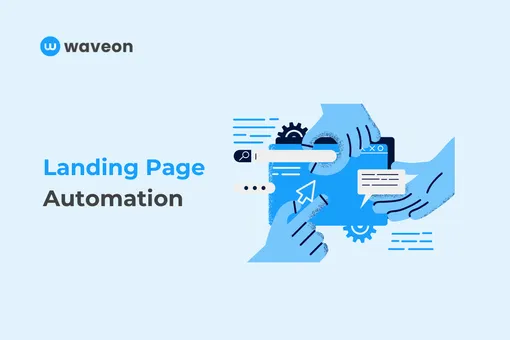Startup
What is Landing Page Automation and How does it work?
Ekta Swarnkar
2024.01.03.
0 min read
TABLE OF CONTENTS

If there’s anything that keeps enterprises operational while producing great revenue, it’s automation. They have integrated it into the core, everywhere from onboarding to accounting.
So, what can small-to-mid businesses learn from industry giants?
Integrating automation into the core of your business. Since automation isn’t going anywhere — the best you can do is to reap its benefits.
That starts with automating landing pages. Why?
Think about it: Landing pages are one of your customers' first touchpoints with your business. And if you don’t make a great first impression or capture them, and they’re gone — nothing else matters.
But you can’t keep guarding every time a new visitor lands on your landing page. You’re not that free!
That’s why — landing page automation.
Still confused? Have patience and keep reading.
This post will teach you about landing page automation, including why it’s beneficial and how to use it to maximize efficiency, increase revenue, and reduce operational costs.
What is landing page automation?
Landing page automation uses tools to create and manage your website’s landing pages to boost conversions and improve your marketing efforts. You can reduce human error, improve productivity, and enhance marketing campaigns for better results.
Landing page automation mainly helps in two ways:
Automating existing time-consuming workflows
Optimizing landing pages for improved conversion rates
Why is landing page automation crucial for businesses?
Businesses using marketing automation reported a 77% increase in conversions and a 29% increase in productivity.
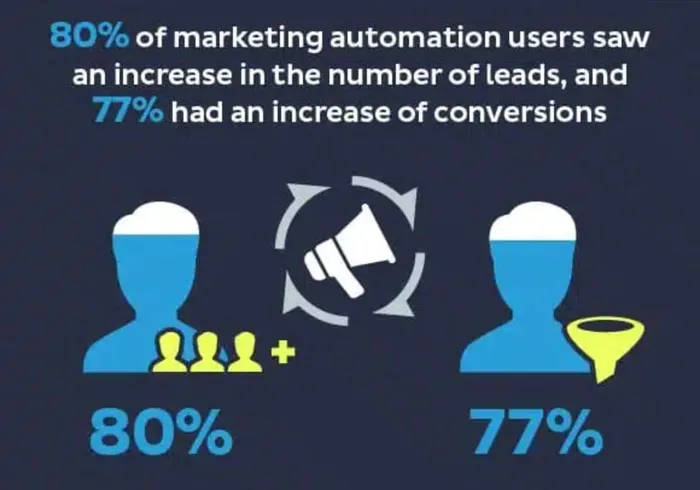
By automating landing pages, you can remove time-consuming tasks and involve yourself more in revenue-generating processes. A simple example is automating the creation of multiple pages.
Suppose your ecommerce site needs a makeover, and you want to redesign all product pages. Based on your collected user feedback, you can easily create A/B split campaigns to see which version works best and replicate the entire process for other product pages.
Landing page automation helps you get rid of tedious tasks like:
Manually designing multiple pages.
Sending welcome emails individually.
Entering contact information manually.
Customizing content based on user behavior.
Collecting data and creating reports.
How does landing page automation help in building a great first impression?
Personalized user experience helps in better conversion rates. AdEspresso experimented and found that personalized landing pages get 27% more conversions than regular landing pages. That’s a nice jump!
Landing page automation also helps you provide a personalized user experience to each website visitor. When the user completes filling out the landing page form, their information will be automatically sent to your CRM.
For example, the landing page copy adapts based on your audience’s online behavior. Visitors from Google ads will see a different landing page heading than visitors from social media redirects. Different variations of headlines will help you provide a more customized user experience, and users are more likely to engage.
Benefits of automating landing pages
Other than building a great first impression and reducing manual tasks, landing page automation can also benefit in other ways:
1. Reduce operational costs
Automating landing pages can help you reduce operational costs simply by eliminating repetitive tasks.
You won’t have to pay every time a copywriter designs a new landing page — you can easily use a tool like Unbounce to create unlimited pages and pay a monthly fee.
You cut costs on manual email writing by automating welcome email sequences every time a new subscriber joins your mailing list.
You can integrate a lead form with a CRM to collect subscribers’ information automatically without having someone do it manually.
You can optimize one landing page for different audience segments instead of investing in multiple designs.
You can integrate analytics to extract data and create reports instead of hiring external help.
These are just a few examples. Almost all manual tasks would require a workforce and expensive tools that can be automated — which is not only cost-efficient but a more error-free way.
2. Improve conversion rates
Automation improves conversion rates in many ways:
By personalizing content, you engage your audience longer.
By automating tasks, you reduce human error and increase efficiency.
By using A/B optimization, you get close to better copies and improve conversion.
By automating the entire conversion process, you streamline your customer’s buying journey.
Chupa Mobile increased its conversion rate by 44% using Unbounce’s landing page automation template. This is close to a 50% increase only by changing landing page templates. It’s terrific!
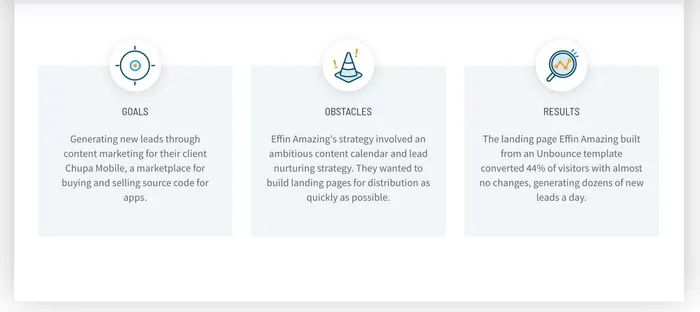
3. Improve website engagement time
According to the State of Personalization report by Twilio Segment:
60% of consumers said they’ll become repeat customers after a personalized shopping experience.
52% of consumers agree that personalization improves brand satisfaction.
When customers enjoy engaging with a website, it also sends positive signals to Google to rank your website higher. This extra attention from Google helps improve organic visibility, which results in more traffic and continues the virtuous cycle.
Landing page automation is the solution to providing a personalized website experience. You can use A/B split tests, customized targeting, and tailored content to engage each website visitor and keep them longer.
4. Optimize and improve continuously
Designing landing pages takes time, effort, and lots of planning. And it’s disheartening when you see your landing page underperforming. But that’s just how marketing works — you test and keep iterating until you find the right balance.
But what if you’re an e-commerce business owner? Or a business with multiple products? Not only you’ll be designing hundreds of landing pages but also iterating on them as you collect more insights. You wouldn’t want to spend that much time on landing page design only.
That’s where automation comes in.
The best thing about automation is that it works even when you’re not. It’ll keep collecting data and delivering tailored landing pages to user segments for more engagement. It’ll also create reports on which version works better for future reference — all while you’re not working.
5. Improve overall productivity and efficiency
Human error has always been a common reason for many faults. For example, LinkedIn’s SSL certificate failure in 2017 caused millions of users to be unable to log in.
In many cases, even a minute mistake can cause a loss of revenue. An example is Amazon, a prominent website for which a one-second delay can cost $1.6 billion in sales.
The point here is not to prove humans make mistakes. Because it’s true — we make mistakes because we’re humans.
The point is that machines are incredibly better at making fewer mistakes while doing tedious tasks. So, the best use of automation is outsourcing manual tasks so that you can use your company’s human resources to do a much better job managing automation.
High productivity and efficiency will come as a by-product.
Effective landing page automation strategies that work today
With so many advantages of automation, how do you leverage it in your business? Below are all the landing page automation strategies you can use to optimize your results:
1. A/B split testing
If all your marketing campaigns depend on guesswork, you can understand why they don’t perform well. We feel we know our audience better, but the truth is we don’t.
Only data can tell what your target audience wants — and automation helps implement data-driven optimization. Enter A/B split testing to create more relevant messages.
Suppose I’m launching an organic skincare product. The last time I launched a similar product, I learned that more than half of my customers were middle-aged women. However, a recent study says young teens are more interested in organic products.
What should I do?
I’ll use the A/B split test to create two versions of landing pages:
For middle-aged women who bought a similar product last time.
For young teens who, according to research, are more interested in organic products.
Then, I’ll wait for each page’s performance. The one with more sales will be the actual target audience. Once I have enough data to decide the winner, I’ll only run the landing page version with the most sales.
Not an entire landing page, even the slightest change can bring outstanding results. For example, YoYoFuMedia increased their client’s revenue by 20% only by changing the color of the “Complete Order” button from grey to yellow.

They could do that because they conducted an A/B split test and found that the yellow button got more click-throughs.
2. Automated email marketing
The best use of landing page automation is to set up automated email campaigns such that every time a new subscriber joins your email list, they’re onboarded with a welcome email/sequence.
Think about it: You won’t want to write welcome emails for every new subscriber manually. Not only is it a waste of time, but how can you be awake all the time only to respond to subscribers?
So you’d do the smart thing: Connect your email client with your landing page lead form and create a welcome sequence in advance. When someone fills out the sign-up form, they get added to your email list, and the welcome sequence starts.
Automating email sequences isn’t only efficient but also revenue-generating. According to an OmniSend report, 31% of email orders are from automated emails.
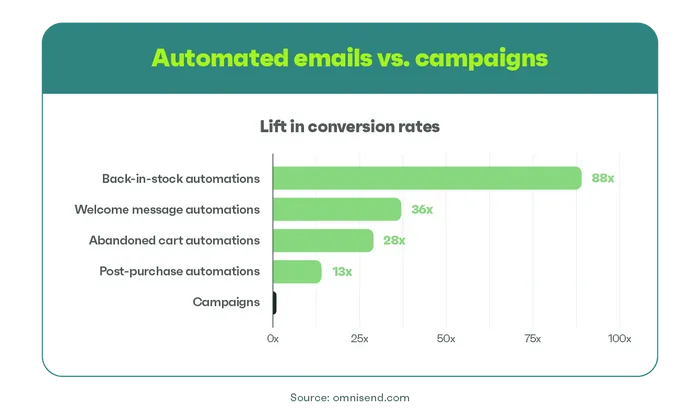
And not just welcome emails, you could automate the entire buyer journey:
Personalized product recommendations based on online interaction.
Abandoned cart emails with purchase buttons.
Similar product recommendations.
Email nurture sequences to get more sales.
3. Integration with CRM
Imagine how amazing it would be if every prospect you spot would automatically be added to your sales funnel. Well, it’s sort of accurate online. How? Using automation.
Let me explain.
Every prospect interested in your product/service fills out a signup form, and their information is added to the CRM that you integrated with your landing page. Your CRM then sends subscriber details to your sales team prospects list, and they enter the sales funnel.
Amazing, isn’t it? You won’t have to do anything, but the process continues.
When implemented correctly, automation and CRM integration can help in sales growth. Take Omega Financials' struggle to manage bulk orders as an example. The team spent most of their time on manual tasks, but that led them to ignore the most important part: Sales.
Using Kylas.io CRM and automation, they could centralize management, create instant analytics reports, and automate manual tasks so the team could focus on sales. The result: increase in sales by 45%.
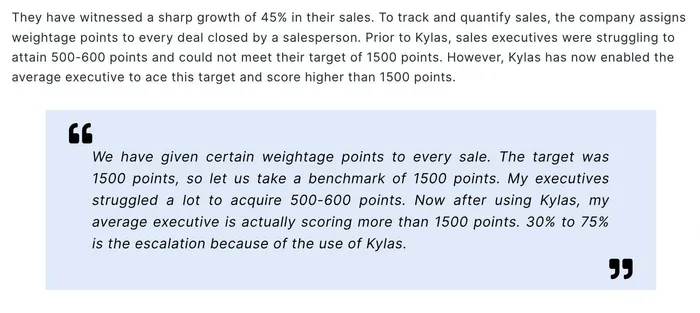
4. Personalized content based on behavioral targeting
Maybe the smartest use of automation is showing personalized content based on user behavior. Even with data, you can segment an audience up to a certain level, but individually, each user is different and has unique preferences.
Without automation, it’s impossible to customize for each user and impossible.
With automation, however, is both efficient and possible. Taking you back to the Google ads example. Suppose I’m trying to sell macarons through my online store. You love pink color, and your friend loves blue, but both of you love macarons.
Now, using automation, I can identify your preferences. How? Based on your online interaction. Personalize landing pages with pink color for you and blue for your friend — this will engage you better and increase my sales.
Typical examples are Amazon recommending more products based on your browsing history:

Or styling ideas to encourage buyers to check out more products:

5. Chatbot integration
Many product/service-based websites show AI-powered chatbots that answer your questions, and that’s automation.
For simple questions, the chatbot will automatically search through the content library to answer the visitors quickly, which helps in reducing response time.
For questions that require an agent’s help, the chatbot automatically raises a help ticket and assigns an agent for a timely response.
Here’s an example of the Ahrefs chatbot:
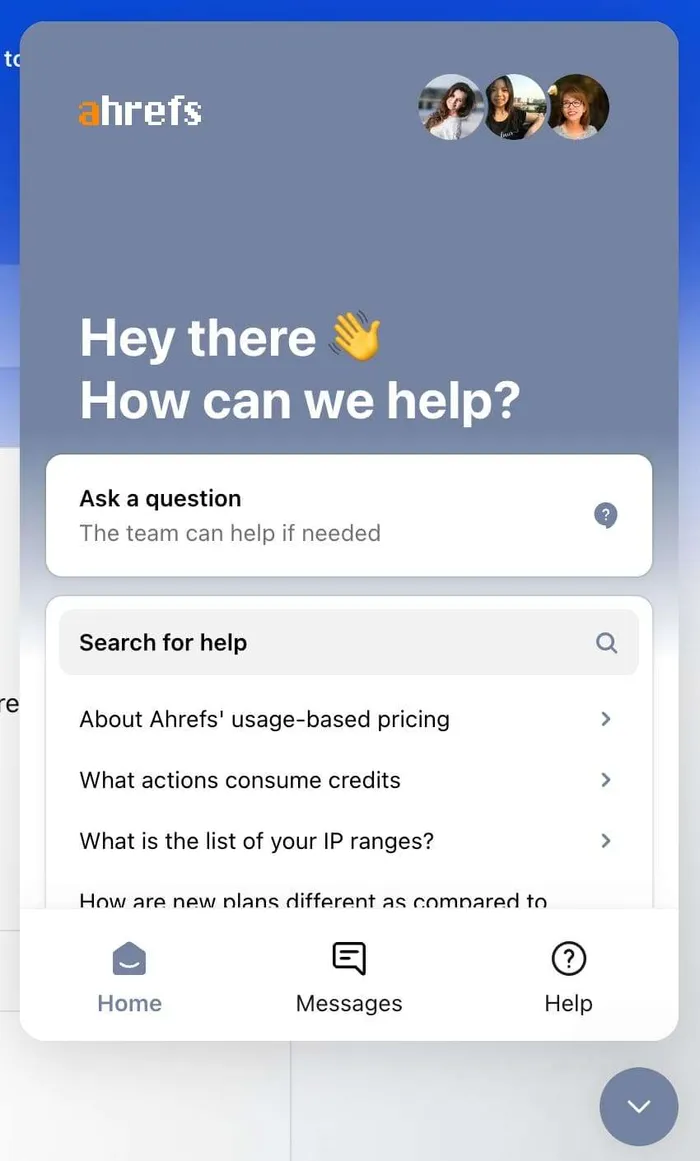
6. Exit intent popups
How would you stop leaving visitors from your website who haven’t taken action? That’s right, by creating exit intent popups.
Using heatmaps and user engagement, you can create certain filters such as “show only if the cursor is moving towards the close sign” or “show when the user has scrolled 75% of the page.“
This way, the popup only shows when the user leaves the page. The best example is OptinMonster’s popup that appears as soon as you move the cursor to the close button:
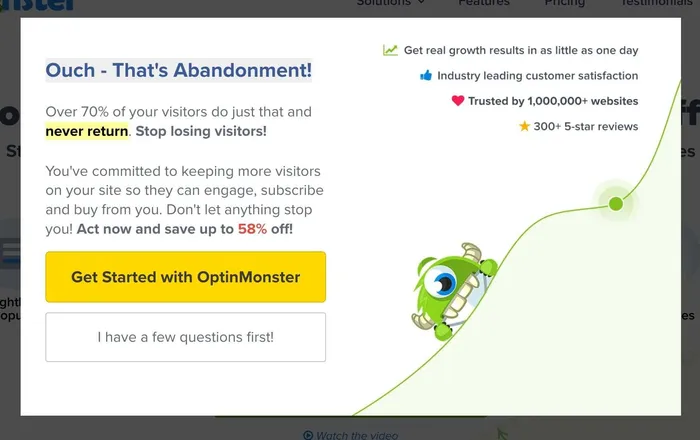
7. Retargeted ads
You would have noticed that when you visit a website, you see its ads everywhere — social platforms, online surfing, and even between mobile game pauses. Those are retargeted ads.
For example, I once checked out the Leadsie tool because one of my friends asked for a product recommendation that allows seamless onboarding for new clients. Now, I see Leadsie ads on my Facebook and Instagram feeds.
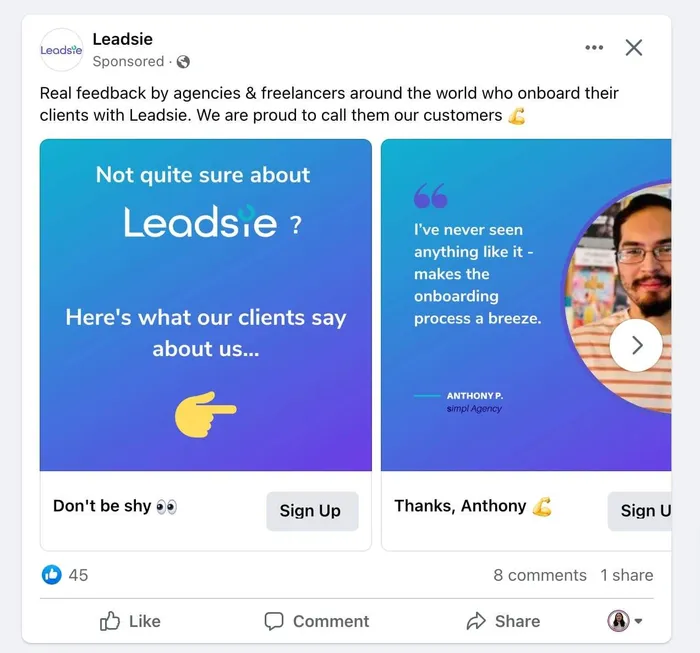
You can set trigged-based automation such as:
Showing product recommendations that you checked out.
CTAs encouraging to finish purchase action.
Customer testimonials as video ads.
8. Progressive profiling
Have you ever filled out a 20-step form? Never? Me neither. And I closed it as soon as I scrolled through to see I’ll have to answer 20 questions. It’s annoying.
So, how do brands collect crucial information while not annoying their audience? By creating automated contact forms that open step-by-step so the visitor doesn’t feel overwhelmed.
HubSpot does this well. All its signup forms ask one question at a time instead of presenting a lengthy questionnaire upfront.
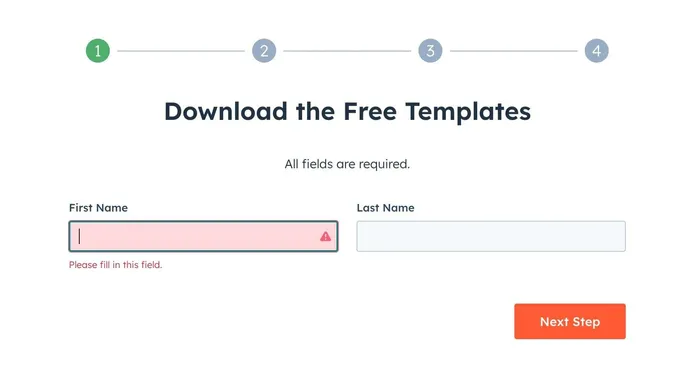
Use Typeform for more interactive designs and elements, such as multiple choices, checklists, etc., to create one-step forms.
Five best landing page software with automation features
If you’re ready to automate your landing pages, here are the top five best landing page builders for you to check out and find fit for your business:
1. Unbounce — AI-powered optimization tools
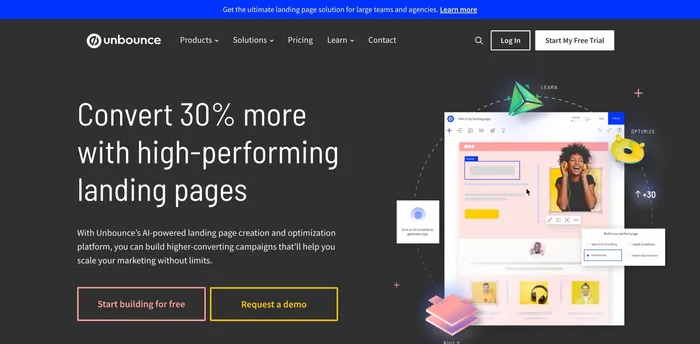
Unbounce is an easy-to-use landing page builder with powerful AI-powered optimization tools to make it easier for beginners to design high-converting landing pages. Its integration with popular platforms and AI makes automation more accessible.
Unbounce helps in:
Creating lead-form embedded landing pages.
Getting more sales by connecting e-commerce tools.
Improve conversions by 30% by optimizing blog traffic.
2. LeadPages — all-in-one landing page platform

LeadPages allows you to do it all: build a website, create lead form embedded landing pages, connect your email marketing tool and online payments to make your entire marketing funnel, and set it on autopilot.
LeadPages gives you:
In-depth training, resources, and support to advance your skillset.
250+ conversion-optimized templates to avoid starting from scratch.
Advanced analytics dashboard to get insights quickly.
3. Paperflite — dynamic content blocks
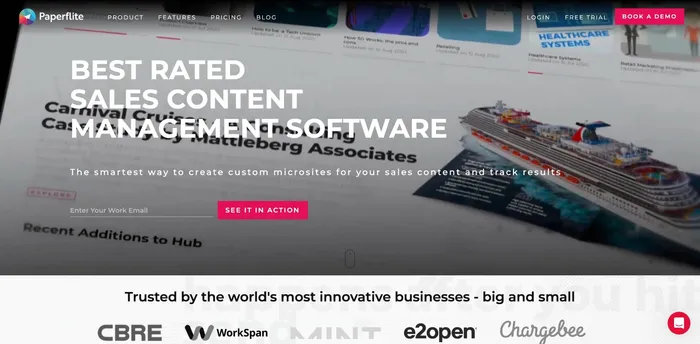
Paperflite allows you to create dynamic content blocks in landing pages. These content blocks display personalized content to different audiences based on their data, such as demographics, location, and online behavior.
Paperflite gives you:
An easy drag-and-drop landing page builder to design without coding skills.
Pre-built library of stunning templates designed by experts.
Integration with popular tools to create seamless processes.
4. Wix — A/B testing and triggers
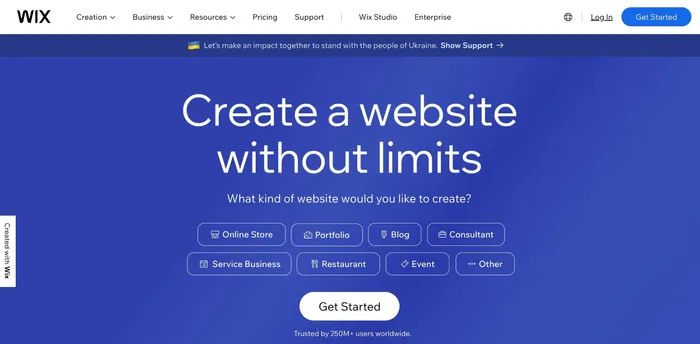
Wix offers powerful automation features like dynamic content blocks, A/B split testing, and personalized form filling based on user behavior. You can also set triggers within Wix to send emails, update content, and transfer leads to your CRM.
Wix’s unique features include:
Wix ADI (artificial design intelligence) that automatically generates landing pages based on your business information.
Wix App Market to integrate more than a thousand popular platforms.
Wix Library to upskill your marketing and selling skills.
5. Instapage — conditional branching
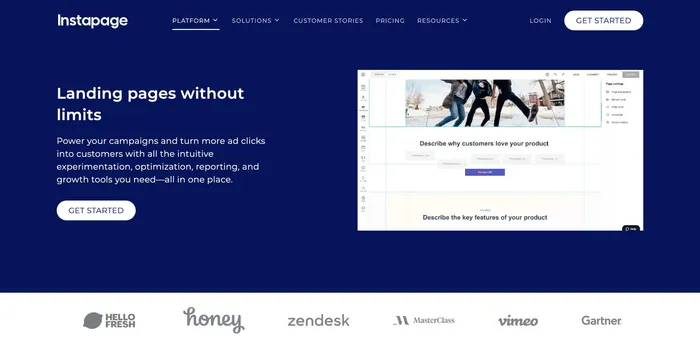
Instapage’s standout feature is conditional branching that directs users to different versions of landing pages based on their activity. It also has heatmaps and admaps features to map out the landing page.
Instapage features are:
AMP landing pages to design fast-loading and mobile-friendly pages.
Easy-to-use user interface perfect for beginners.
AI content generator to let AI write your landing page copy.
How to choose the right landing page automation software?
Choosing the right landing page automation platform depends on your business’s needs and priorities.
If your goal is to increase conversion rates, look for a platform that allows you to optimize various parts of the landing page.
If you want to automate manual tasks, look for a simple platform with powerful integration capabilities.
If your goal is both, a platform with advanced automation features and integration capabilities is perfect.
Here’s a list of features to consider while choosing a landing page automation platform:
A/B testing: Make sure the platform allows you to conduct A/B split tests on various parts of your landing page, such as headlines, colors, font, CTAs, etc., so you can gather data and create optimized landing pages.
User-friendly interface: Look for a beginner-friendly platform with no coding skills required. See if it offers a drag-and-drop builder or pre-made templates.
Dynamic content blocks: Your platform should include dynamic content block features to allow you to create personalized user experiences.
In-built automation features: If your platform has built-in automation features like sending emails, onboarding new subscribers, etc., that’s great.
High integration capabilities: Confirm that you get easy integration options with popular platforms. This will allow you to have seamless workflows.
Advanced analytics: See if the platform includes an analytics and insights section. You need one to make faster and more calculated decisions.
Affordable pricing: Check if the platform is in your business’s budget.
Premium support: Confirm the support is accessible 24/7 in various formats: call, chat, and email.
Automate your landing pages to increase your conversion rates
Your audience wants to have a pleasant experience with your brand. And it’s only possible when you give what they need. Automating landing pages is one of the best ways to provide a fantastic customer experience while growing your brand sales.
Pick a landing page automation platform and start optimizing your existing system. Then, observe analytics closely and watch your sales increase and conversion rate improve!




